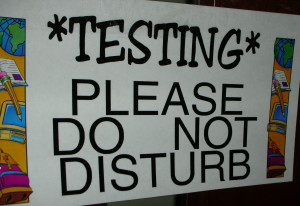 “It is impossible to live without failing at something, unless you live so cautiously that you might as well not have lived at all, in which case you have failed by default.” —J. K. Rowling
“It is impossible to live without failing at something, unless you live so cautiously that you might as well not have lived at all, in which case you have failed by default.” —J. K. Rowling
By Elizabeth Stincelli, DM
It’s part of life, part of business, part of any challenging endeavor that we undertake. We’ve all experienced it, we’ve all survived it, yet we all fear it: failure. Why does the mere thought of it undermine the self-esteem of even the most confident among us? We fear failure because we believe the lies we tell ourselves. Here are four myths that cause us all to fear failing:
We will be less than
We often fear that if we fail we will be seen as less than perfect. Well, here’s the cold hard truth, none of us are perfect and we never will be. Just because we aren’t perfect, doesn’t make us any less valuable, less capable, or less worthy.
We won’t make any progress
We often think that if we are failing, we aren’t making any progress. The fact is, quite the opposite is true. There is more to learn from failure than there is from any amount of success. As long as we are learning, we are making progress.
It will define us
We often fear that failing makes us a failure. We are not defined by our failures; it’s what we do with them that really matters. Failure is an event; it does not speak to who you are, what your values are, or what you are capable of accomplishing.
We won’t recover
We’ve failed before and we‘ll fail again. We recovered last time, we’ll recover this time, and I’m willing to bet that we’ll recover next time. Not to say that recovery isn’t a long hard road, but the lessons are in the journey. And the truth is, the more we fail, the better equipped we become to deal with and recover from our next failure.
Start Failing
The truth is you’re going to fail. You will fail, the person next to you will fail, and the person above you will fail. Failing is an inevitable part of life. But, it is in failing that we find the opportunity to learn, to grow, and to gain confidence. It doesn’t make you less than. It will not hinder your progress. It does not define you. And, despite how you may feel at the time, you will recover. It’s time to stop believing the myths and start failing.
© 2016 Elizabeth Stincelli
Liz Stincelli is passionate about recognizing and inspiring the leader in each of us. She is the Founder of Stincelli Advisors where she focuses on helping organizations engage employees and improve organizational culture. Liz holds a Doctor of Management degree with an emphasis on organizational leadership.
Learn more about Liz by visiting her website, stincelliadvisors.com and connect with her on Twitter @infinitestin, Google+, and LinkedIn. You can contact her by email at stincelliadvisors@gmail.com.









